The development of a new library and theatre in Strabane the late 2000’s was a significant investment in its cultural life but also a statement of confidence in the regeneration of the town centre. The buildings are well designed and impart a sense of new civic life to the area. Their scale links them to the rest of the town and their quality sets a benchmark for future development.
|
49. Regeneration – the Alley Theatre and Library 2008
The development of a new library and theatre in Strabane the late 2000’s was a significant investment in its cultural life but also a statement of confidence in the regeneration of the town centre. The buildings are well designed and impart a sense of new civic life to the area. Their scale links them to the rest of the town and their quality sets a benchmark for future development.
0 Comments
48. A new start – Let the Dance Begin (The Tinnies), 1999. After nearly 30 years, a way forward was agreed and new institutions put in place. This large sculpture, between Lifford and Strabane was erected to commemorate the millennium but it also reflects hope based upon a respect for diversity. The musicians are from the two main traditions in the region and a nearby plaque explains that they ‘represent a shared cultural vision in an area where music and dance are great unifying and highly popular art forms.’ 46. St Teresa’s church Sion Mills 1963.
By 1963 the use of decoration on modern buildings was becoming more acceptable again. Here, a massive recreation of the last supper was commissioned from artist Oisin Kelly and mounted as a screen across the front of the building. It is not as much decorated building as building displaying artwork. The building is designed to mimic a classical temple, a form used for many churches in the past. 45. Scandinavian Modernism- First Presbyterian Church, 1955.
After World War II, the ideas of European Modernism became much more influential across the UK and Ireland. This had an emphasis upon function, an honest expression of materials and a rational approach to design problems. The Scandinavian approach was not as harsh as the main style and was adopted to create an elegant new Presbyterian Church in Strabane in 1955. 44. Inter war classicism- Former Northern Bank. 1922
The Edwardian period came to a sudden halt with the First World War. Industrial production boomed during the period only to decline afterwards. However, despite major political changes which resulted in the partition of Ireland in 1922, confidence was still sufficiently high to build a new bank in Strabane in the same year. This assertive building is a great addition to the town and reflects a continuing interest in classical architecture for institutions and public buildings during the period. 43. Edwardian Freestyle -Eden Terrace, Stabane.
The Edwardian period before the First World War was the high water mark of Victorian fashions. Architecture became much more sumptuous and decorative. Styles were mixed and matched for decorative effect and elements, particularly for less formal buildings, were reorganised to the same ends. Eden Terrace in Strabane (1910) was constructed by the Abercorn Estate during the period and bears many of the halmarks of the period- as well as the coat of arms of the landlord. 42. The County Dongal Railway- Ballymagorry Station 1901
Hidden down a side road from Ballymagorry Village is a more functional building - its former railway station. This is made from corrugated iron probably ordered from a pattern book and assembled on site. It reflects the increasing industrialisation of the period. The building was constructed as a station for the Donegal Railway, a narrow gauge line that opened in 1901 and ran from Derry to Strabane and then on into Co Donegal. It is seemingly untouched from when the last train passed in 1955. 41. High Victorian -Humphrey Memorial Clock and Fountain 1876.
Another example of this style was the Humprey Memorial Fountain which stood at the centre of Abercorn Square in Strabane until 1931. Inspired by the Albert Memorial in London (1872) such elaborate gothic structures were constructed in a number of towns at the time. This one commemorated Major John Humphreys, agent to the Marquis of Abercorn. He was also the father of the famous hymn-writer Cecil Francis Alexander (All things Bright and Beautiful). 40. Church of the Immaculate Conception, Strabane- 1890-95 This large church reflects the increasing confidence of the Roman Catholic community towards the end of the nineteenth century, and like many such churches, the influence of funds sent from America. This building is by William Hague and uses details taken from French churches of the 13th century. In form such buildings are often referred to as ‘High Victorian’ because of their profusion of detail.
39. Scottish Baronial Revival- Baronscourt Stables- 1890
Given the strong links between Ulster and Scotland, it is perhaps not surprising that the Scottish Baronial style became popular towards the end of the century when Home Rule was a topic of debate. As a defensive style it was popular for insurance offices (Belfast), Police Stations (Dungannon) as well as houses. Joseph Bell of Belfast was employed to extend and remodel the stables of Baronscourt in the style in 1890. The building was designed to be seen as a romantic outline from the main house. |
Marks of Time
Sketches of buildings in the North West of Ireland and further afield with a little information about their history. Categories
All
Archives
June 2024
|

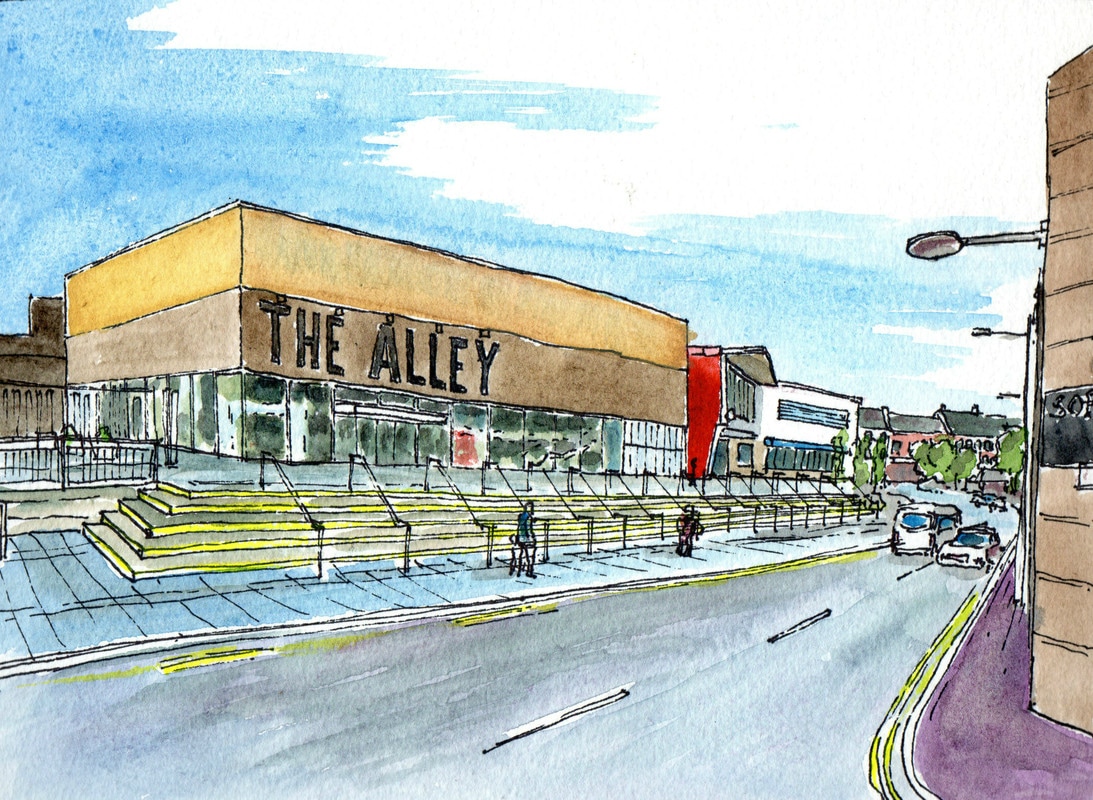
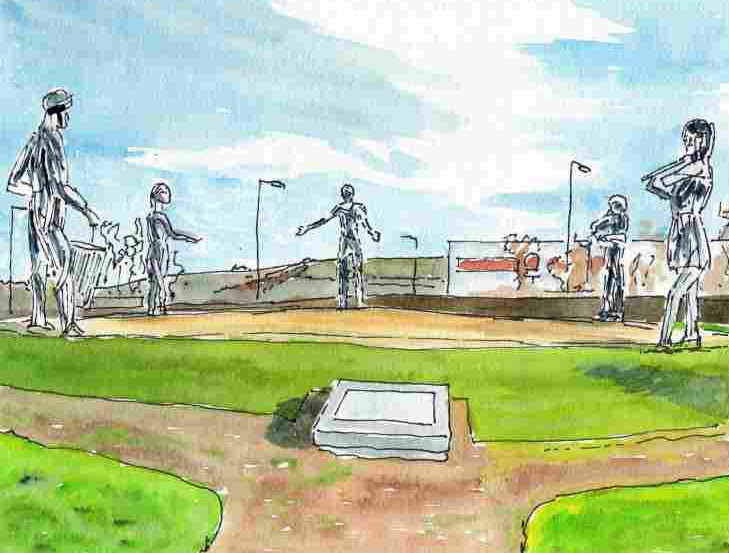

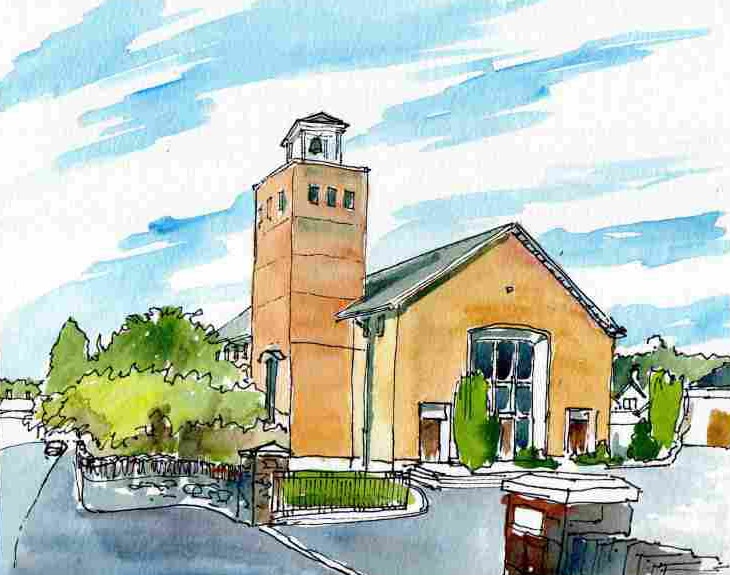
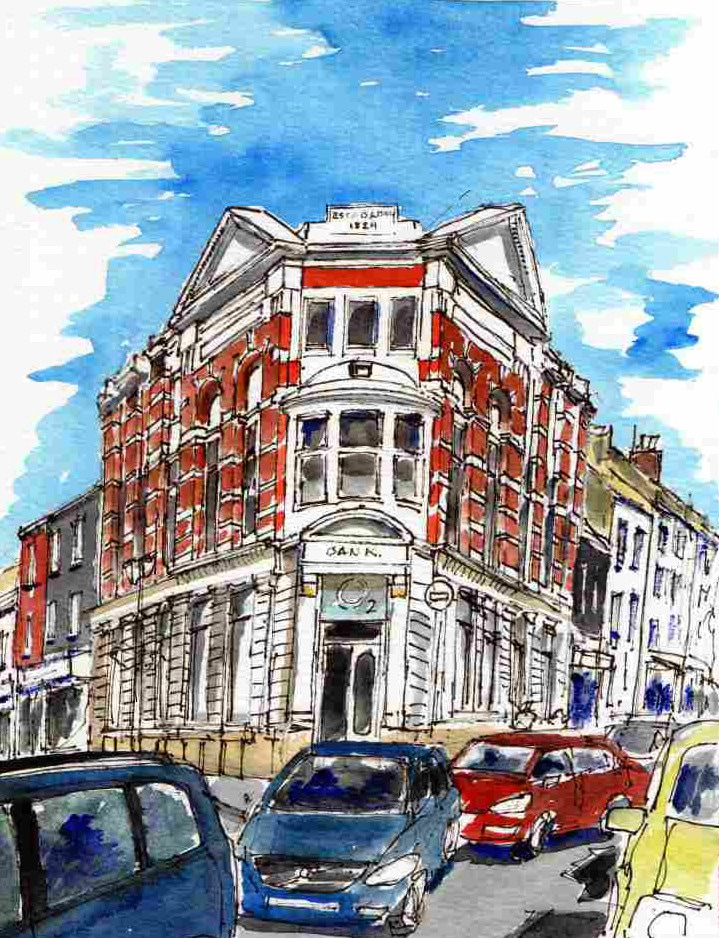
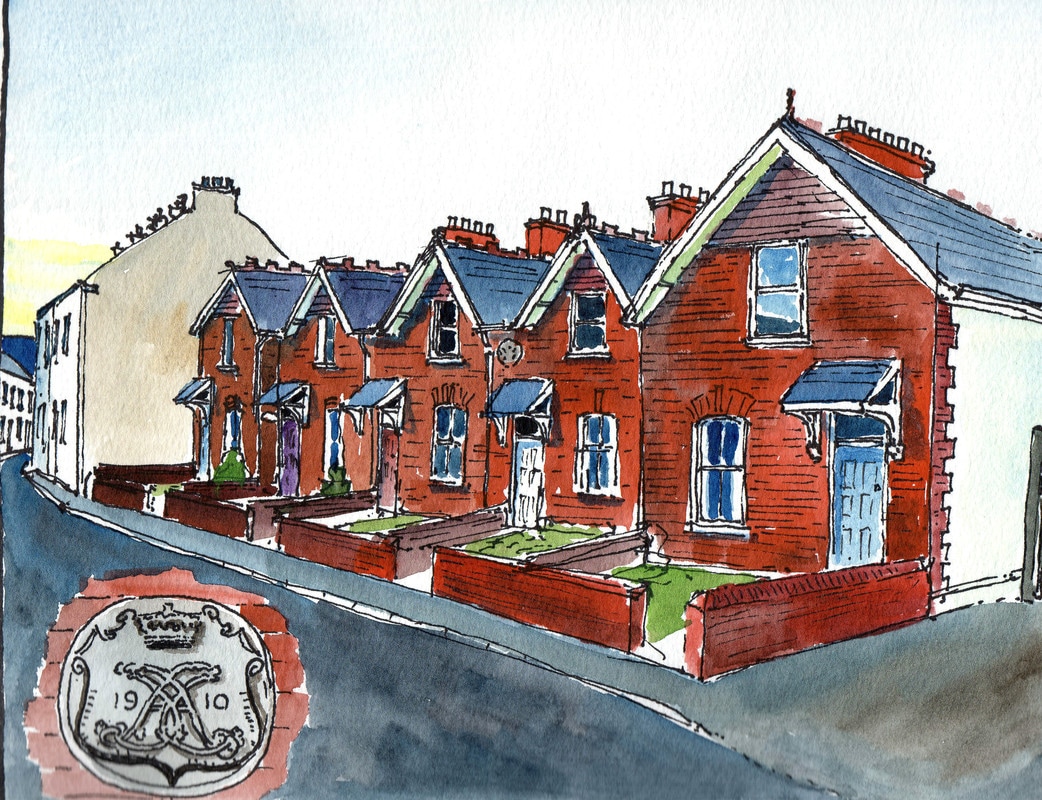
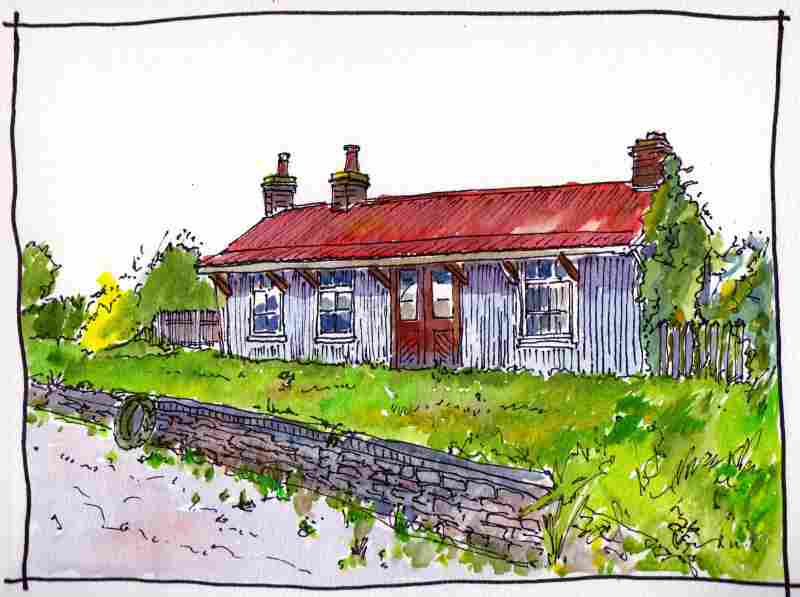
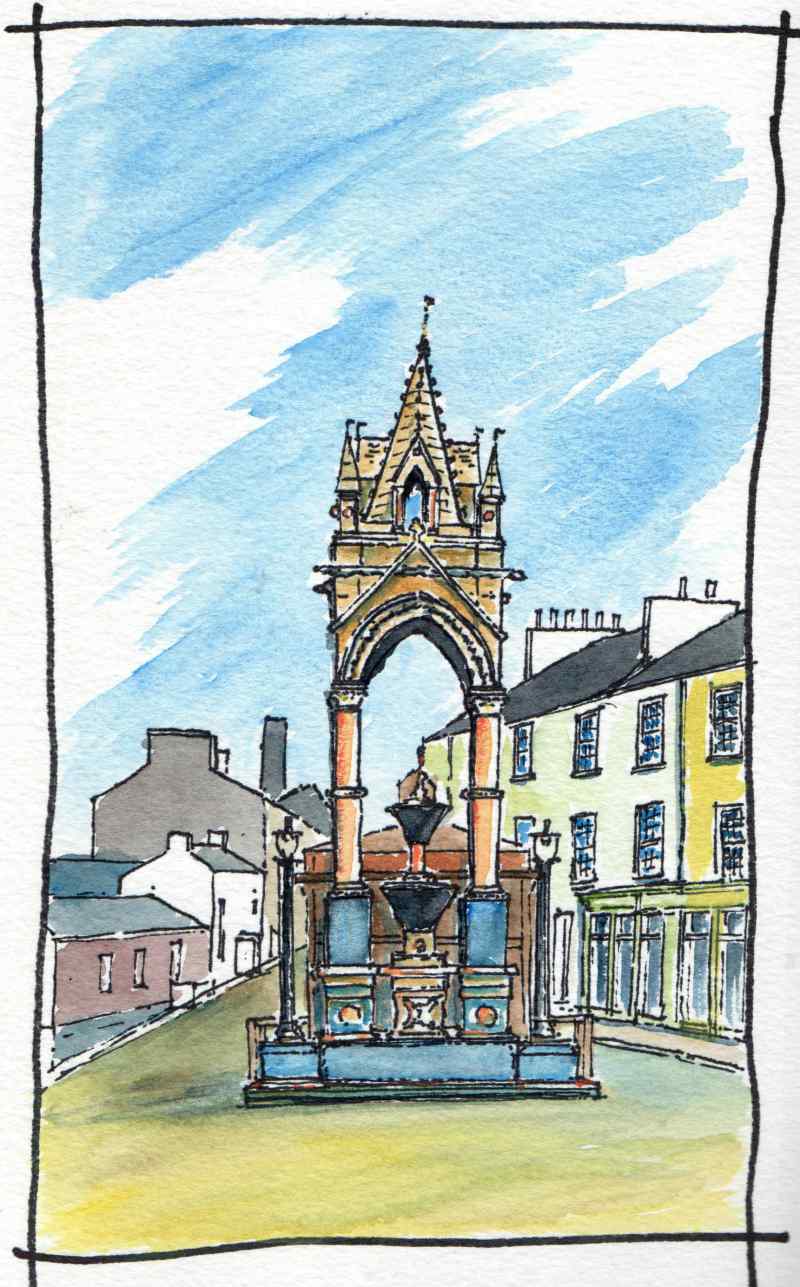
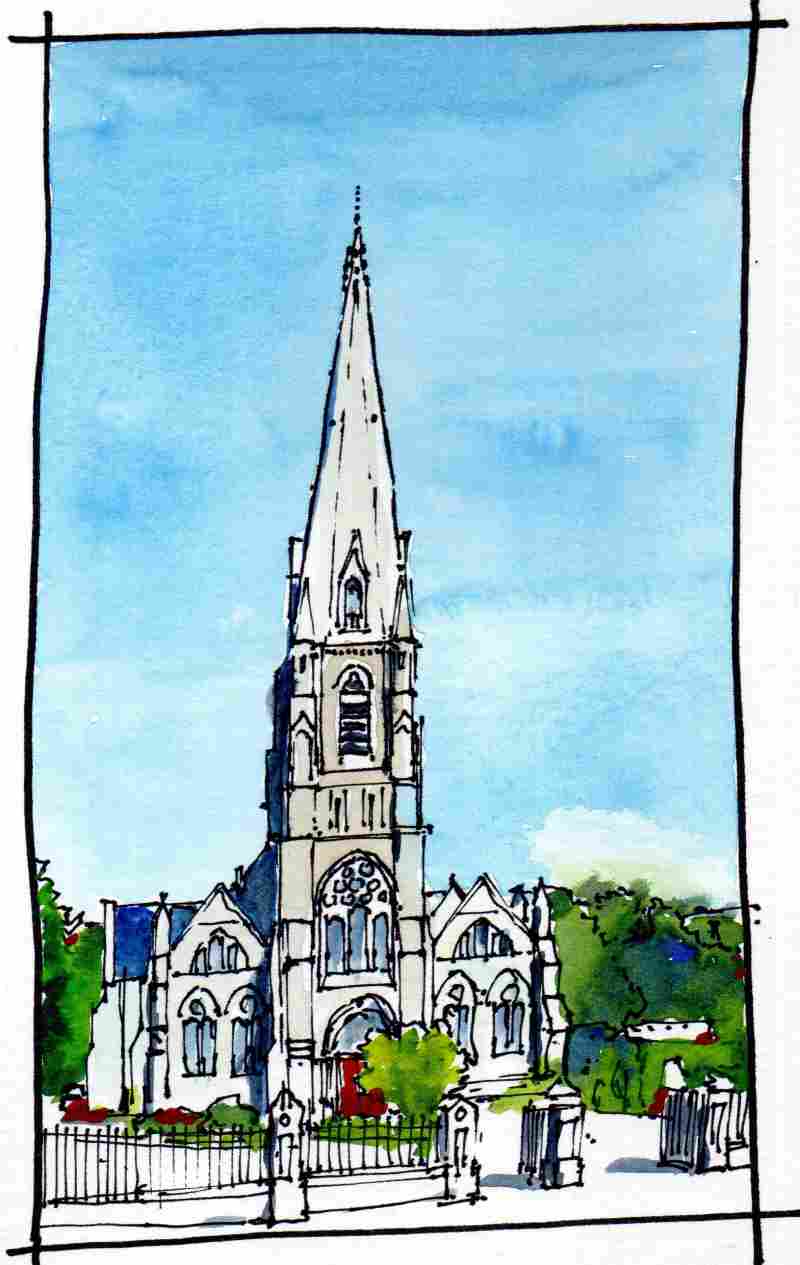
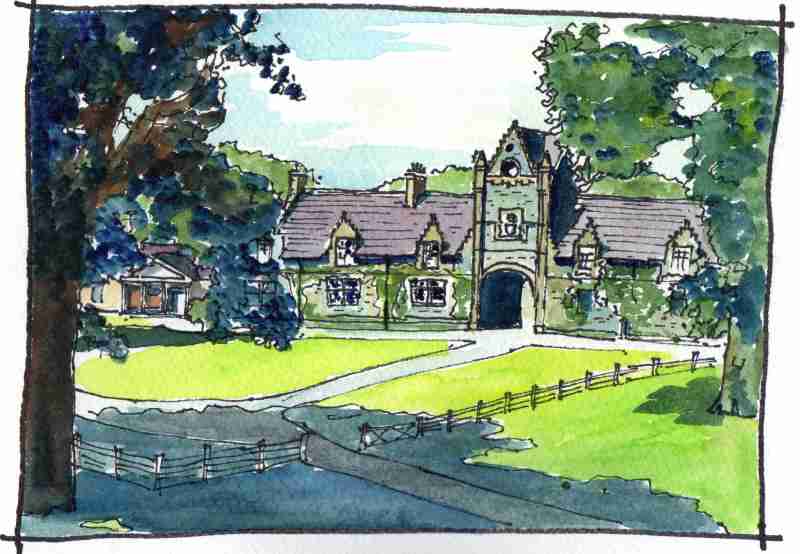
 RSS Feed
RSS Feed
